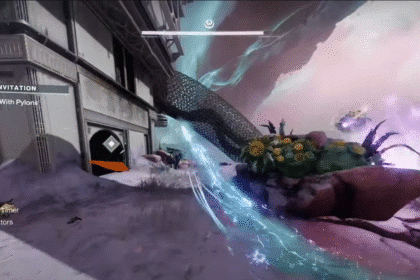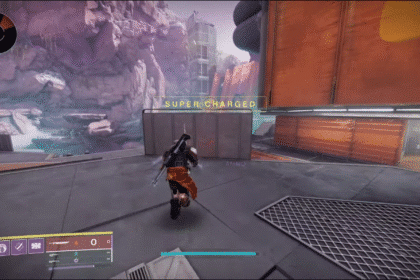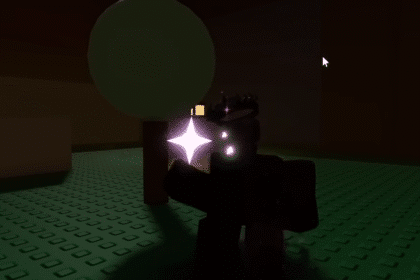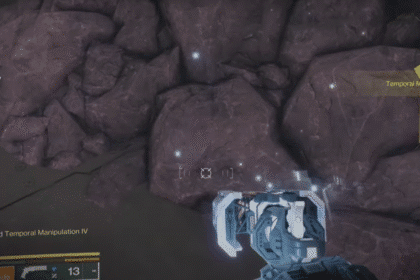If you are coming from Escape From Tarkov, this shouldn’t surprise you, but if not, then you should know that Gray Zone Warfare has a very complex health system somewhat rooted in realism. In this guide, we will try to help you understand the game’s health system and what you can do to ensure your survival as you venture out into the world!
Complete Human Health System (HHS) Medical Guide
To summarize how Gray Zone Warfare’s health system works, it basically simulates how the human body works in real life. This means that you have vital organs to protect and blood levels to maintain, among other things.
In the lower left corner of the character menu screen, you will see various bars that indicate different needs and health-related metrics. These include the following:
- Blood – This is essentially an unorthodox version of a health bar. Needless to say, you have to keep this high at all times. If it gets too low, there is a chance for you to black out, and you must be revived by other players.
- Hydration – This can be topped up with drinks, and doing so will help with your blood regeneration.
- Energy – Similar to hydration, this is replenished by eating food. It is also a factor in your blood regeneration.
- Weight – This will show you how much you are carrying. This affects your mobility.
- Intoxication – This goes up as you use stimulants, which we’ll talk about a little later.
- Radiation – This goes up while you are in an irradiated zone. High levels are, obviously, lethal.

Keep An Eye on Your X-Ray
Upon checking your health panel, you will be able to inspect an x-ray of your character that will show you any issues you may have. The following things are what you need to keep an eye on in this menu:
- Wounds – Indicated by a red marker, these will show you where you have gotten hit. These can either be light, medium, or severe. Only light wounds can heal over time, while more serious cases will require further intervention.
- Bruises – Indicated by a purple marker, these will show you where you have gotten hit but it was blocked by protective gear. These heal on their own, but will cause you a lot of pain until they do.
- Treated Wounds – These are indicated by a green marker. Similar to bruises, they will cause some discomfort as they heal.
- Organ Damage – Damaged organs are indicated by color changes in your x-ray. It should be noted that getting hit at certain vital organs, such as the brain, will be fatal no matter what.
- Damaged Bones – Your limbs can sustain bone damage, which are also indicated by color changes in the x-ray. Falling from high spots is one surefire way of having this issue.

Treating Your Health Issues
All is not lost if your x-ray starts looking like an effed up rainbow, assuming you have the necessary items with you. Here are the items that can help you treat all sorts of health issues:
- Bandages – These are used to treat wounds. Useless for bruises, though.
- Tourniquets – These can help you stop bleeding, but it won’t heal your wounds.
- Splints – Used to treat damaged bones. Keep some with you if you can’t stop jumping around.
- Blood Bags – Used to replenish blood in a pinch.
- Stimulants – These have varying uses, and you should read their descriptions to figure out when to use them.
- Surgery Kits – Used to treat damaged organs, . Needless to say, you probably won’t be using these for your heart or brain.
- Pills – Similar to stimulants, these have varying uses. Read their descriptions to figure out what a specific type of pill can treat.
There are multiple types of each of these items, and it’s up to you to decide which ones to carry around with you and when to use them. They have varying charges, and they can be placed in first aid kits to save some inventory space.
SIDE NOTE: Check out our guide on all of the tasks in Gray Zone Warfare, which is mainly made with Mithras players in mind, but still very helpful for any other faction!
While most of these medical items have very obvious uses that we have already covered, some are a little more complicated. The following are examples of currently implemented items to keep in mind:
- ORI-12 – Helps with the regeneration of bone damage, but it will increase your intoxication and cause some degree of pain.
- Strychnine – These temporarily block stamina drain in exchange for draining your arm’s stamina. Also causes pain, among other symptoms.
- Activated Charcoal – Reduces intoxication. A valuable remedy for those who rely on a lot of stimulants.
- Ibalin – Relatively long-lasting painkillers with a decent number of charges.
- Meloxicam – Also a painkiller, but with a much longer duration compared to Ibalin.
- Potassium Iodide – Reduces your radiation stat. Make sure to have some with you if you’re heading to irradiated areas.

Healing Other Players
In order to use medical items on allies, you must have them in either your tactical rig, belt, or your pockets. These have a small lightning bolt icon on the upper left corner of the container slots.
In order to use them on others, you must first examine your ally to see if they have any medical conditions that need to be addressed. If nothing shows up, this means that there is nothing serious to address.
Again, make sure that the necessary items are in one of the containers mentioned above. Also, if they are in a medical kit, you must take them out of it first before using them. The same concept applies when applying first aid to yourself.
Specific Conditions to Avoid or Treat
As stated earlier, there are various medical conditions to keep in mind. Some of them actually come in varying severities, so we’ll try to go through each of them in the list below:
- Light Bleeding – Will cause you to periodically lose blood. Must be treated with a bandage.
- Medium Bleeding – Will cause you to lose blood at a higher rate. Same treatment as above.
- Dizzy – This occurs when your energy, hydration, or blood gets too low. Will slightly affect your vision until it is treated.
- Concussion – Getting shot in the head while wearing protective gear can cause this. Will have an adverse effect on your vision.
- Coughing – Makes your character audibly cough, potentially giving away your position. This is typically a result of damaged lungs.
- Sore Arms – This happens if you aim down sights or use melee attacks too much. Can be treated by letting your arm stamina recover.
- Cramp – A worse version of sore arms that will require even more recovery to treat.
- Fatigued – Blocks your stamina regeneration and has an audible heartbeat sound. This is treated by letting your leg stamina recover.
- Exhausted – A much worse version of fatigued. This prevents you from sprinting, jumping, and climbing. Can be deadly when you get tired in the wrong place.
- Out of Breath – Blocks stamina regeneration, and is caused by excessive physical activity.
- Blind Spot / Vision Black-out – Two different degrees of blindness caused by flashbangs.
- Nauseous – Nausea is caused by liver injury, high intoxication levels, and excessive exposure to radiation. Treatment will vary depending on what caused it.
- Pain / Suffering – These are varying levels of pain and must be treated with painkillers. Otherwise, you have to wait for your wounds and bruises to heal.
- Tremors – Caused by excessive pain. This will affect your ability to aim, as your character’s hands will start shaking.

And that is everything you need to know so far about the game’s health system, with more stuff being implemented or changed as the early access period continues. If you are still very new to the game, consider checking out our complete beginner’s guide for Gray Zone Warfare to get started!













